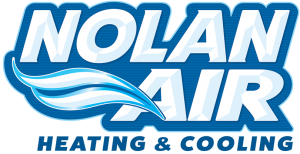Are you up to date with the latest developments in refrigerants? As the HVAC industry moves towards more environmentally friendly options, two key players have emerged: R410A and A2L refrigerants. Understanding the differences between these options is crucial for anyone involved in air conditioning and refrigeration systems. Let’s delve into what you need to know about these new refrigerant standards.
R410A: The Current Standard
R410A has been the go-to refrigerant for residential and light commercial air conditioning systems for years. Its popularity stems from its high energy efficiency and relatively low impact on the ozone layer. However, R410A is not without its drawbacks. It has a high global warming potential (GWP), which means it contributes to climate change when released into the atmosphere. As environmental concerns grow, the search for alternatives has intensified.
A2L: The Next Generation
A2L refrigerants, such as R32 and R454B, are gaining traction as alternatives to R410A. These refrigerants have significantly lower GWPs compared to R410A, making them more environmentally friendly. Additionally, A2L refrigerants offer comparable or even better performance in terms of energy efficiency and system capacity. However, they come with their own set of challenges.
What You Need to Consider
Safety: A2L refrigerants are classified as mildly flammable, unlike R410A, which is non-flammable. While the risk is minimal under normal operating conditions, proper handling and installation procedures are crucial to mitigate any potential hazards.
Compatibility: Switching from R410A to A2L may require modifications to existing systems due to differences in operating pressures and lubricants. It’s essential to consult with manufacturers and industry experts to ensure compatibility and optimal performance.
Regulatory Compliance: Keep abreast of local and international regulations governing refrigerants. As governments increasingly prioritize environmental protection, there may be mandates or incentives to transition to low-GWP alternatives.
Training and Certification: Technicians and engineers should receive training on handling A2L refrigerants safely. Certification programs are available to ensure proficiency in installation, maintenance, and troubleshooting of systems using these refrigerants.
Conclusion
The transition from R410A to A2L refrigerants represents a significant step towards a more sustainable future for the HVAC industry. While A2L refrigerants offer environmental benefits, it’s essential to weigh the safety considerations and ensure compliance with regulations. Stay informed, invest in training, and collaborate with trusted partners to navigate this transition smoothly.
At Nolan Air, we’re committed to providing innovative solutions that meet the evolving needs of our customers while prioritizing environmental stewardship. Contact us today to learn more about our services and how we can assist you in adopting new refrigerant standards.
This post aims to provide a comprehensive overview of the transition from R410A to A2L refrigerants, highlighting key considerations for industry professionals and consumers alike. Let me know if you’d like to adjust any details or add more specific information!
Have Questions?
Please take a moment to send me a couple of lines so that we may answer them for you.
